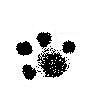Splendide piste innevate tra il silenzio dei monti, solo il rumore degli sci che scorrono lievi, aria cristallina e frizzante……..etciù! Ahimè l’inverno non porta con sè solo deliziosi momenti di svago montano; naso che cola, tosse, febbre, dolori sono incidenti che spesso fanno da contraltare negativo di questa stagione.
Le malattie cosiddette da raffreddamento (compresa l’influenza) così frequenti e fastidiose che si osservano durante la stagione invernale sono, in realtà, nella maggior parte dei casi patologie di origine virale e cioè non direttamente legate al freddo ma piuttosto ad una infezione da parte di un virus che trova terreno di facile attecchimento negli organismi esposti alle basse temperature.
Tutti noi conosciamo il disagio che queste situazioni comportano e la sostanziale assenza di rimedi risolutivi.
La medicina naturale offre una serie di proposte volte ad accelerare la risoluzione di queste patologie e ad alleviarne i sintomi. A differenza della medicina “ufficiale” l’ambito naturale focalizza l’attenzione sulla stimolazione del sistema immunitario cercando di fornire all’organismo strumenti atti a promuovere una reazione endogena cioè interna che porti alla guarigione.
Tipico esempio di questi rimedi è l’Echinacea sostanza ad elevata attività immunostimolante che può essere usata sia in prevenzione che durante le fasi acute. La Propoli in tutte le sue numerose forme (spray, compresse, gocce, gomme da masticare) ha una buona attività antivirale e antiinfiammatoria e agisce quindi sia sulle cause che sui sintomi delle malattie da raffreddamento.
Il Rame oligoelemento ed il Bismuto oligoelemento hanno una potente azione antiinfettiva e antiinfiammatoria; il secondo soprattutto nelle forme cosiddette alte: faringiti, laringiti, tonsilliti.
Il Ribes Nigrum nella sua forma di macerato glicerico ha una importante attività simil-cortisonica e quindi agisce molto efficacemente sui sintomi quali tosse secca, disfonia, mal di gola.
Esistono poi rimedi per la febbre che spesso accompagna queste forme; Aconitum, Belladonna, Bryonia sono alcuni dei più efficaci ma devono essere prescritti ad hoc a seconda del tipo di febbre osservata.
L’elenco potrebbe proseguire per pagine e pagine, ma non è questa la sede per farlo.
Chiudo ricordando alcuni punti “non farmacologici” importanti:
– Il latte caldo così spesso consigliato dalla nonna NON va bene nelle forme da raffreddamento; il latte contiene caseina che provoca infiammazione delle mucose e quindi aumento della produzione di muco e catarro.
– Non copritevi eccessivamente; in presenza di febbre l’organismo deve avere la possibilità di disperdere il calore e non di accumularlo.
– Bevete tanto, catarro, respirazione difficile, tosse provocano una intensa perdita di liquidi che deve essere compensata.
Amo ripetere che anche la medicina naturale è medicina vera e non da consumo e che quindi le situazioni e le terapie vanno sempre discusse e affrontate con l’aiuto del medico di fiducia
Dottoressa Ornella Pancolini.
 E’ prevista neve…così per stare in tema.
E’ prevista neve…così per stare in tema.
__________________________________________________________________
English Version
Beautiful snow-covered slopes in the silence of the mountains, only the sound of the skis that slide mild, clear air and sparkling …….. etciù! Bless you, the winter brings with it only delicious moments of leisure mountain, runny nose, cough, fever, pains are accidents which often counterbalanced by negative this season.
The so-called diseases by cooling (including influenza) so frequent and annoying which are observed during the winter season are, in fact, in most cases diseases of viral origin and that is not directly related to cold but rather to an infection by a virus that is easy to land engraftment in organisms exposed to low temperatures.
We all know that these situations involve the discomfort and the absence of decisive remedies.
Natural medicine offers a series of proposals to speed up the resolution of these diseases and to alleviate the symptoms. Unlike the “official” medicine the natural environment focuses on the stimulation of the immune system trying to supply the instruments to stimulate a reaction that is endogenous internal would be a cure.
Typical example of these remedies is Echinacea substance with a high immunostimulant activity that can be used both in prevention that during the acute phases. Propolis in all its many forms (sprays, tablets, drops, chewing gum) has a good anti-inflammatory and antiviral activity and thus acts both the causes and the symptoms of colds.
Copper and Bismuth trace element trace element have a potent anti-infective and anti-inflammatory action, especially in the second forms the so-called high: pharyngitis, laryngitis, tonsillitis.
The Ribes Nigrum in its glycerine macerate has a significant steroid-like activity and therefore acts very effectively in symptoms such as dry cough, hoarseness, sore throat.
There are also remedies for fever that often accompanies these; Aconite, Belladonna, Bryonia are some of the most effective but must be prescribed ad hoc depending on the type of fever observed.
The list could go on for pages and pages, but this is not the place to do it.
Close recalling some points “non-pharmacological” important:
– The hot milk so often advised by her grandmother NOT okay in the form of cooling milk contains casein which causes inflammation of the mucous membranes and thus increased production of mucus and phlegm.
– Do not cover too much, in the presence of fever, the body must be able to dissipate heat and not to accumulate.
– Drink a lot, phlegm, difficulty breathing, wheezing, coughing cause an intense fluid loss that must be compensated.
I love to repeat that natural medicine is real medicine and not for consumption and therefore the situations and therapies should always be discussed and addressed with the help of the medical officer
Dr. Ornella Pancolini.






I delight in, result in I discovered exactly what I used to be
looking for. You have ended my 4 day long hunt!
God Bless you man. Have a great day. Bye